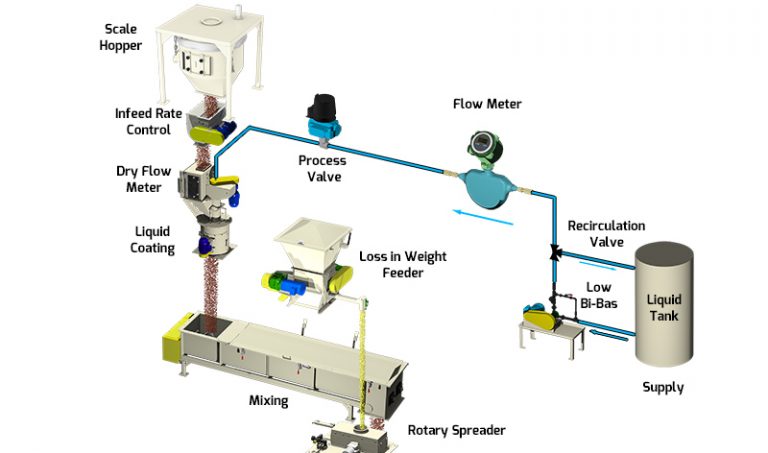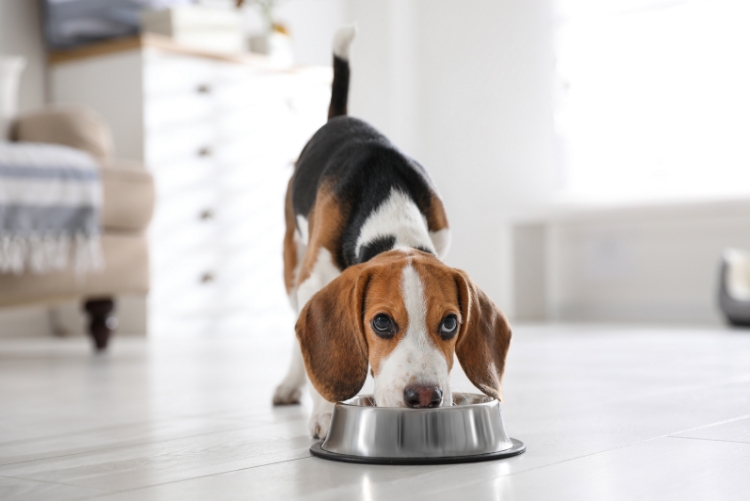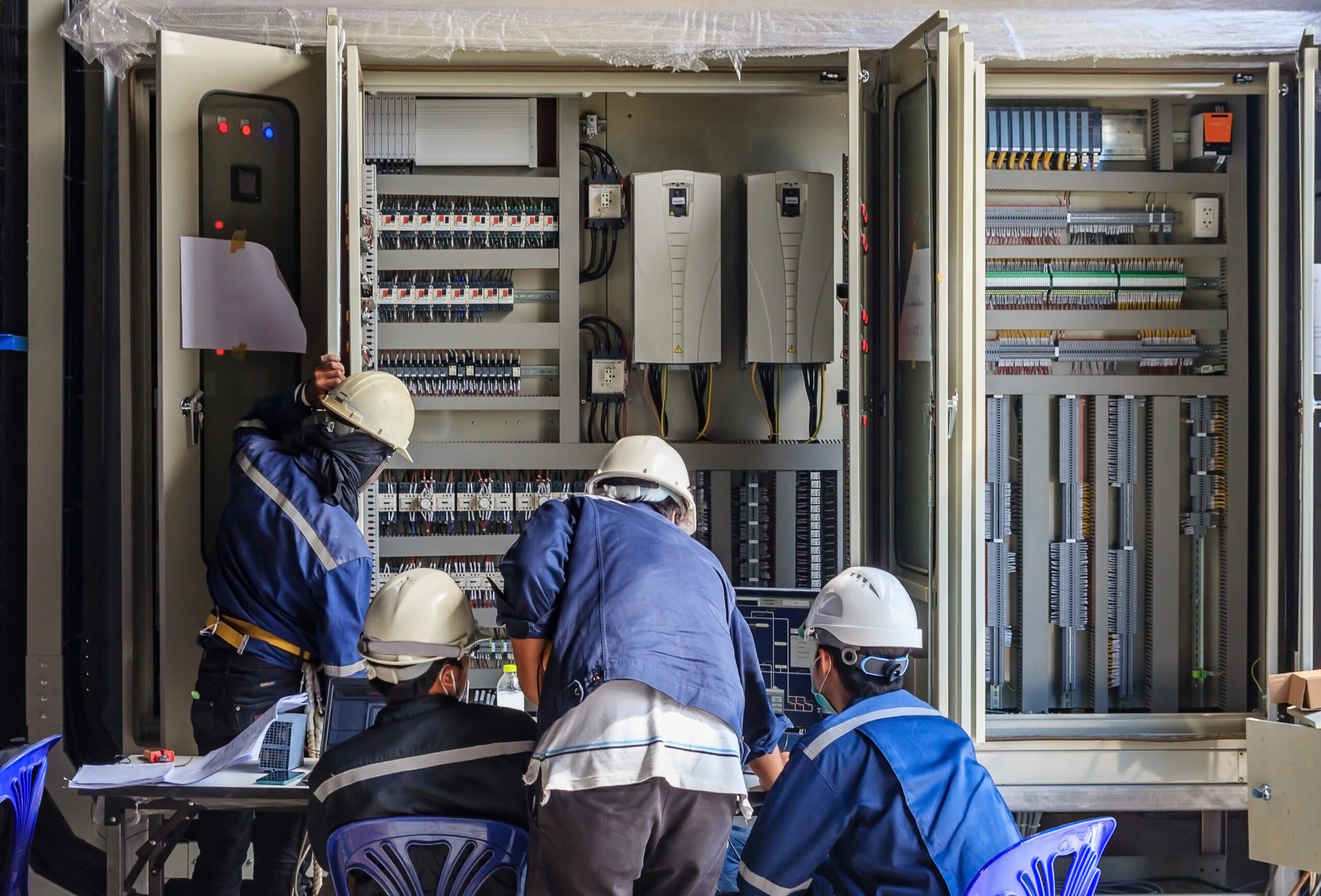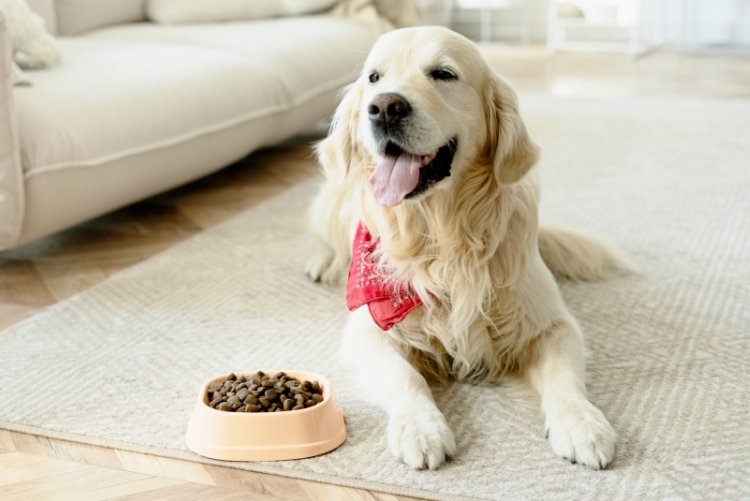
Improving efficiency in 2019 is a top priority for many feed mill and pet food processors. Automating processes or upgrading existing automation is often the way to maximize efficiency gains, but it can be difficult to know where to start. This roadmap of feed and pet food processing automation upgrades can help you move in the right direction. We’ve updated this list for 2022 to help feed and pet food processors find the best automation improvements this year.
7 Automation Upgrades for Feed and Pet Food Processors in 2022
1. Process Time Optimization
The most efficient feed or pet food process automation aligns all process times, including filling, weighing, discharging and mixing, for all ingredients. While exact timing is difficult given high-speed and low-speed estimates, and other variance, machines should not be sitting idle for long periods. There are many ways that you can improve the process time of the bottleneck machine in order to meet the timing of the upstream or downstream processes.
If your mixer is idle, consider dividing ingredients into two or more weighing and filling stations, using a different faster weighing mechanism, or using a larger feeder for faster filling. If your scales or hoppers are idle, optimize your ribbon mixer by; dividing mixing between two or more mixers, using a larger mixer, using a drop-gate for immediate discharge, or using a larger motor to speed up mixing.
Benefits of this Automation Upgrade for Pet Food Processors and Food Manufacturers in 2022
Process time optimization can require substantial investment from food and pet food processors, but this upgrade also has a high payoff potential. Working with the highest level of efficiency allows your plant to simply produce more products in a shorter amount of time. If process time optimization involves adding another mixer, you’ve also created a redundancy. In the event that your first mixer requires repairs or encounters a problem, you don’t have to shut down operations completely. If your current mixer is outdated, worn out, or not performing as well as it used to, this automation upgrade also gives you an opportunity to fix a problem. There are many automation upgrades available for pet food processors and food processors, but this is a good upgrade to consider first.
- Speed up production
- Create redundancy
- Replace worn-out or outdated mixing equipment
Get the secrets to feed mill and pet food automation systems design. Download the Engineer’s Guide to Weighing and Batching >
2. Scale System Improvements
It is possible, with the right scale and weighing strategy, to speed up this process without sacrificing accuracy. A variety of different weighing systems exist, with versatile features to suit your facility and your ingredients. With a mass-flow continuous weighing system, you can measure your ingredients accurately without actually creating any pause in the system. By using roll-over tubs, slide gates or butterfly valves, you can eliminate delays in the discharge phase. If you’re using conveyors due to facility height restrictions, you can weigh and measure materials while moving them. If your scale system is holding up the rest of your process, consider this feed and pet food processing automation improvement first.
Benefits of this Automation Upgrade for Pet Food Processors and Food Manufacturers in 2022
Finding the right type of scale can help to improve efficiency dramatically, while also reducing product defects. In some cases, it’s possible to weigh ingredients without introducing an extra step. If you are using conveyance to move materials from one part of the processing facility to another, it’s possible to weigh ingredients at the same time. Regularly assessing your scale instruments can help you avoid costly errors. If, for example, your macro scale is consistently overfilling by 2%, that’s essentially 2% of your major ingredient wasted, which adds up. Even if you don’t make improvements or changes to your scales, regular calibration and maintenance will help to keep them accurate.
- Increased accuracy
- Reduced ingredient waste
- Improved product quality
- Improved efficiency
3. Ribbon Mixer
If you haven’t looked at your mixer in several years, this can be a viable upgrade to improve plant efficiency. With low shear, fast mixing times, and a streamlined design, ribbon mixers eliminate many mixing problems, like dead zones and overmixing, that other mixers create. When you upgrade with a ribbon mixer, you can reduce mixing times and improve total output, but this may require altering downstream processes to match the new mixing time. A ribbon mixer can also reduce maintenance costs and downtime.
Benefits of this Automation Upgrade for Pet Food Processors and Food Manufacturers in 2022
A ribbon mixer is one of the most versatile automation upgrades for pet food processors and food manufacturers alike. These machines appear fairly simple, however certain mixer design specifications can optimize their performance and speed. If you are considering adding a ribbon mixer for the first time or replacing the mixer you already have, optimizing its design can help to improve the overall coefficient of variation and therefore the end production quality. Keep in mind that different materials have different mixing requirements; very sticky or thick mixes will require more mixing power while powdery or friable ingredients will require a gentler mixing action. With your ribbon mixer optimized for your ingredients, you can reduce maintenance needs, energy costs and product defects, while increasing efficiency and production.
- Reduce maintenance costs
- Reduce energy costs
- Reduce product defects
- Increase efficiency
- Increase production
4. Mistcoater
Applying uniform liquid coatings to pet food and other animal feed is a challenge that many processors are not sure how to address. Materials often stick together during coating, they aren’t coated evenly, the spray nozzles require too much maintenance, or the process simply takes too long. Upgrading your liquid coating system to a Mistcoater can solve coating problems and speed up your process. Instead of using spray nozzles which easily clog and only coat materials on one side, the Mistcoater atomizes liquids using spinning disks and coats material evenly as it falls through the mist.
Benefits of this Automation Upgrade for Pet Food Processors and Food Manufacturers in 2022
Some liquid coatings are relatively easy to apply, while others can be quite challenging. If liquid coatings are frequently wearing down machine components, stopping production, or they aren’t coating the product uniformly, this upgrade can save you hours of time and substantially reduce costs. This is a particularly helpful automation upgrade for pet food processors, since many pet foods use liquid coatings with high oil and fat content, which can quickly clog spray nozzles.
- Reduce clogging
- Improve coating uniformity
- Reduce maintenance costs
- Reduce downtime
Get the secrets to feed mill and pet food automation systems design. Download the Engineer’s Guide to Weighing and Batching >
5. Micro Ingredient Automation
Hand-adding small amounts of ingredients is a temporary solution that can quickly become a permanent part of the feed or pet food processing system. This is also an inefficient and inexact technique that can quickly introduce errors, workplace hazards, complicate lot tracking, and disrupt the recipe. Automating this process will ensure uniformity and remove delays or hazards posed by hand-adding. Upgrade to a micro ingredient automation system and your micro ingredients will be a seamless addition to your overall recipe.
Benefits of this Automation Upgrade for Pet Food Processors and Food Manufacturers in 2022
Micro ingredient automation can quickly simplify additions of vitamins and minerals. Since micro ingredient systems measure ingredients exactly, instead of relying on hand-added scoops, there’s less opportunity for error and also less waste. The micro ingredient system can also integrate into the existing process time, so there’s no need to add extra steps or extend the process time. Finally, the micro ingredient system removes a manual task from the overall operation. This can help to reduce the number of employees working in close proximity to each other, which became particularly concerning in the wake of the COVID-19 pandemic, and will likely continue to be a concern into 2022 and beyond. This is a useful automation upgrade for pet food processors and food manufacturers working with many different types of trace ingredients.
- Reduce waste
- Improve accuracy
- Improve process time
6. Reprogrammable Controls
When mixing times change, micro ingredients are added, or processes change, your computer or PLC is the one to control those changes. Often, that means rewriting the logic using the manufacturer’s proprietary code, often requiring a visit from a technician. If a number of automation upgrades are on the horizon, you can save time with a reprogrammable logic controller with a user-friendly interface.
Benefits of this Automation Upgrade for Pet Food Processors and Food Manufacturers in 2022
As machines become more sophisticated and increasing levels of technical expertise become important in pet food and food manufacturing, as with all types of manufacturing, proprietary code and similar obstacles to improvement will become more and more costly. Finding employees who can understand and work with ladder logic may already be a challenge, but a proprietary programming system creates an obstacle to improvements that only the OEM can solve. Controls that use text-based questions and an easy-to-follow interface will be able to adapt and make improvements much faster, and without the cost of a special technician’s visit.
- Simplifying automation improvements
- Ability to adapt operations quickly
7. Super Sack Unloader
If your daily ingredient usage exceeds 250 kg, whether for major or minor ingredients, upgrade to a super sack unloader instead of individual bags. This will not only decrease packaging and materials costs, but it will also improve efficiency and reduce workplace hazards with the proper super sack unloader design.
Benefits of this Automation Upgrade for Pet Food Processors and Food Manufacturers in 2022
A super sack unloader is another automation upgrade for pet food processors and food manufacturers that can help to significantly save time and money. A super sack or bulk bag unloader is one of the simplest and most common automation upgrades. It’s often one of the first upgrades made at many facilities that are newly introducing automation. It’s important to have a safe and sturdy super sack unloader frame to make dispensing ingredients easy. Once this frame is set up, processing facilities can save time and money.
- Reducing packaging materials and costs
- Improving efficiency
- Reduce injuries from heavy lifting individual bags
As you consider the best process automation improvements at your feed or pet food processing plant, start with the processes that take the most time, introduce the most error, or repeatedly create downtime and maintenance costs. You’ll see the greatest benefits from correcting these issues first, and this will pave the way for achieving optimal system production later on.







